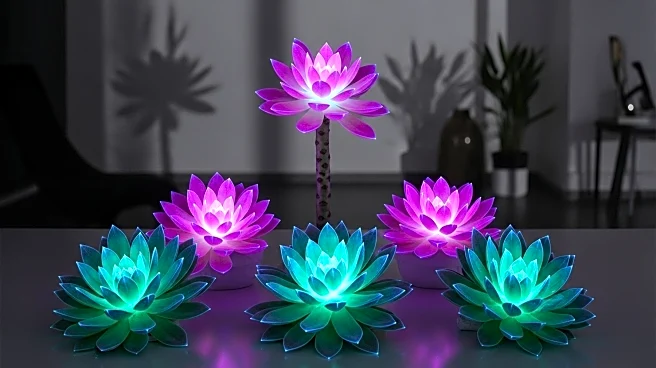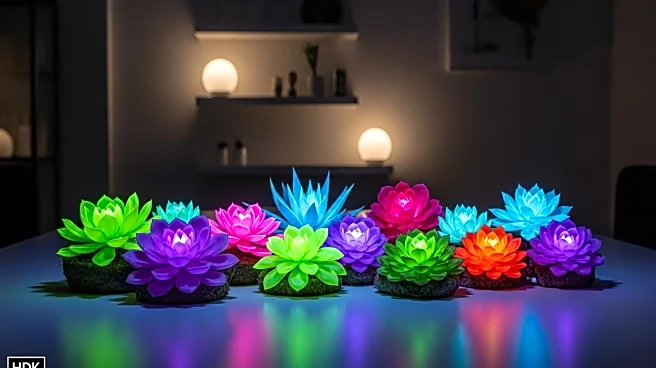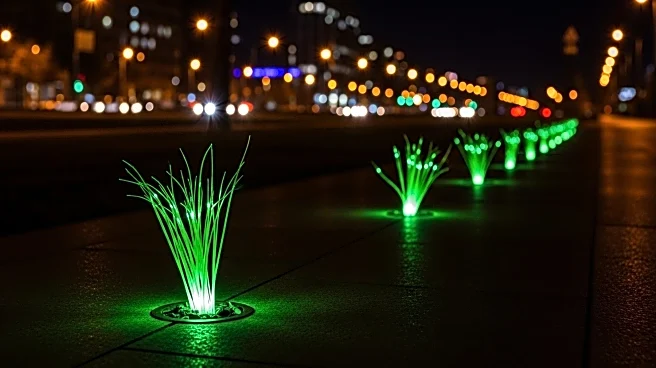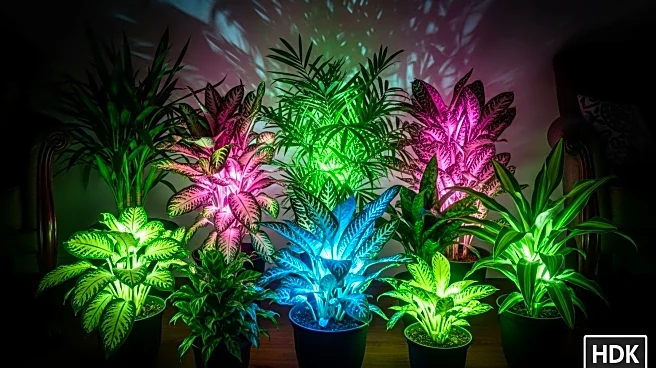What is the story about?
What's Happening?
Researchers in China have engineered multicolored glow-in-the-dark succulents by injecting them with phosphor particles that absorb and release light. These succulents can glow for up to two hours, offering a potential sustainable lighting solution for both indoor and outdoor spaces. The innovation represents a significant advancement over previous attempts to create luminescent plants, which often resulted in dim light. The study, led by Shuting Liu at South China Agricultural University, suggests that these plants could eventually replace traditional lighting methods, providing an eco-friendly alternative.
Why It's Important?
The development of glow-in-the-dark succulents represents a breakthrough in sustainable lighting technology, with potential applications in urban planning and interior design. By reducing reliance on electricity, these plants could contribute to energy conservation and lower carbon emissions. The research also highlights the potential for integrating biological and material engineering to create innovative solutions for environmental challenges. As cities and communities seek to implement greener technologies, such advancements could play a crucial role in achieving sustainability goals and reducing ecological footprints.
What's Next?
The researchers aim to expand their work to other plant species, potentially broadening the application of this technology. Future studies will focus on optimizing the luminescence and exploring commercial viability. The success of this innovation could lead to collaborations with urban planners and environmental organizations to integrate plant-based lighting into public spaces. Additionally, further research may address any ecological impacts and ensure the safety and sustainability of these luminescent plants.
AI Generated Content
Do you find this article useful?












